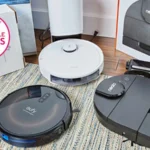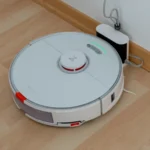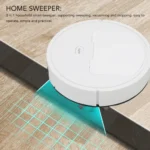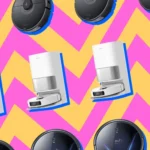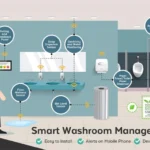Imagine coming home to a perfectly clean floor without having to lift a finger. Sounds impossible, right? Well, not anymore! Thanks to the advancement in technology, we have robot vacuum cleaners that can do just that. But how do they work, you ask? These intelligent machines use advanced navigation systems and sensors to map out your home and clean every nook and cranny. Plus, with the added smart features like Wi-Fi and mobile app integration or voice control, they make cleaning easier and more convenient than ever before. In this article, we will take a closer look at the ins and outs of robot vacuum cleaners, including how they work, their smart features, as well as their advantages and limitations.
How Robot Vacuum Cleaners Work
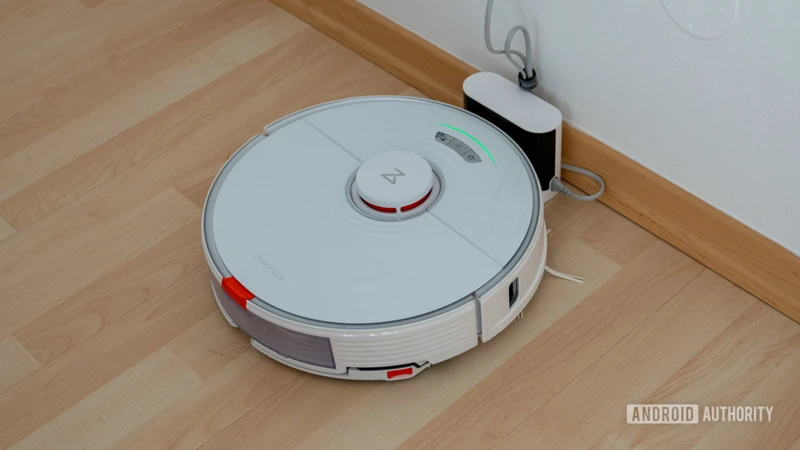
Robot vacuum cleaners have become increasingly popular in recent years, thanks to their ability to clean floors with minimal human input. Using advanced technology, these devices navigate around furniture, avoid obstacles, and pick up dust and dirt, ensuring the floor is spotless. If you’re perplexed about how these machines work, there’s no need to worry. In this section, we’re going to dive into the details of how robot vacuum cleaners function, from their navigation systems to their cleaning mechanisms and sensors. By the end of this, you’ll have a clear understanding of what makes these gadgets so innovative and effective.
Navigation Systems
Robot vacuum cleaners are equipped with advanced navigation systems that help them move around your home and clean efficiently. They use various sensors and mapping algorithms to move around furniture, avoid obstacles and clean every nook and cranny.
One of the most common navigation systems in robot vacuums is the “random walk” algorithm, which loosely mimics the way humans clean a room. The robot moves in a straight line until it encounters an obstacle and then changes direction. While this method is simple, it can waste a lot of time and energy, and aren’t as efficient as other methods.
Other robot vacuum cleaners use sophisticated mapping algorithms to move around your space. These algorithms map out your home and create a virtual layout of the area to be cleaned. The robot uses this map to find the most efficient cleaning path while avoiding obstacles.
In addition to mapping, robot vacuums use sensors to detect obstacles in their path. Infrared and laser sensors are used to detect walls and large objects, while bump sensors located on the robot’s body detect furniture and other smaller objects in their path. Some models also have drop sensors that detect stairs and other drop-offs.
To summarize, navigation systems in robot vacuums play an important role in ensuring efficient cleaning. They use a combination of sensors, mapping algorithms, and obstacle detection to move around your home and avoid obstacles. Choosing a robot vacuum with an advanced navigation system is crucial to ensure it cleans every corner of your home effectively. To know more about the robot vacuums with the best navigation systems and features, you can refer to our best robot vacuum guide.
Obstacle Detection
Obstacle detection is one of the most important features that makes robot vacuums smart. It enables the robot vacuum to navigate around obstacles and clean effectively without getting stuck. Most robot vacuums use a combination of sensors and software algorithms to detect obstacles in their path.
One type of sensor commonly used is the infrared sensor, which emit infrared light and then detect the reflection of the light to identify obstacles. Another type of sensor is the laser sensor, which operates by emitting laser beams and mapping the environment. This sensor is commonly used in high-end robot vacuums and provides very precise navigation.
There are also bumper sensors that detect physical contact between the robot vacuum and an object. Once triggered, these sensors signal the robot vacuum to change direction and avoid the obstacle. Similarly, there are drop sensors that prevent the vacuum from falling off stairs or ledges.
Some robot vacuums come equipped with a camera sensor that takes images of the environment and uses machine learning algorithms to analyze the data. This enables the robot vacuum to adapt to new environments and recognize previously encountered obstacles.
Many robot vacuums use a combination of sensors to improve mapping of the environment. With accurate mapping, the robot vacuum can navigate more efficiently and avoid retracing its path, saving time and energy.
Obstacle detection technology has come a long way in recent years and have made robot vacuums far more effective and efficient than earlier models. If you’re interested in learning more about robot vacuums, check out our article on comparing different brands, the pros and cons of robot vacuums, or top robot vacuums for pet hair. You can even read about what the future holds for robot vacuums in our article on what to expect in the future. And if you already own a robot vacuum, consider checking out our tips on maximizing its efficiency.
Cleaning Mechanisms
Robot vacuum cleaners have several cleaning mechanisms that work together to ensure efficient cleaning. These mechanisms include:
- Brushes: Most robot vacuums have side brushes that help to sweep dirt and debris towards the main cleaning brush. The main brush then loosens and picks up dirt and dust from the floor. Some models also have rolling brushes that help to capture pet hair and other stubborn debris.
- Suction: The suction power of the robot vacuum is what enables it to suck up dirt, dust, and debris from the floor. The suction power varies depending on the model, but most robot vacuums have enough power to pick up small particles like dust and hair.
- Filtration: A good filtration system is important for people with allergies or asthma. Most robot vacuums have HEPA filters that capture small particles like pollen and dust mites, leaving the air in your home cleaner and healthier.
- Mopping: Some robot vacuums also come with a mopping feature that enables them to mop hard floors. These vacuums have a water tank that drips water onto the floor as the vacuum moves, mopping the floor clean in the process.
The combination of these cleaning mechanisms ensures that the robot vacuum is effective in cleaning different types of floors. The brushes help to loosen dirt and debris from carpets and hard floors, while the suction power sucks up the dirt and dust. The filtration system ensures that the air in your home remains clean, while the mopping feature leaving your hard floors spotless. With these mechanisms, robot vacuums are an effective cleaning tool for any home.
Sensors and Mapping
Robot vacuums have advanced sensors and mapping technology that allows them to move around the house, avoiding obstacles and detecting dirt, all while remaining efficient and thorough in their cleaning. These sensors are what make them smart and are a major factor in what sets them apart from traditional vacuums.
Some of the advanced sensors found in robot vacuums include:
| 1. Cliff sensors | These sensors detect changes in elevation, meaning the vacuum won’t fall down stairs or off ledges. |
| 2. Bumper sensors | These sensors detect when the vacuum has bumped into an obstacle, enabling it to change direction and continue cleaning. |
| 3. Infrared sensors | These sensors help the robot vacuum “see” objects in front of it and avoid them. |
| 4. Optical sensors | These sensors help the robot vacuum navigate by mapping out the room and recognizing obstacles in its path. |
| 5. Dirt sensors | These sensors detect dirt and debris on the floor, ensuring that the robot vacuum spends more time cleaning areas that need it most. |
The mapping technology found in robot vacuums:
Robot vacuums use a combination of sensors and software to create a map of the room they are cleaning. This mapping technology allows them to efficiently navigate the room and avoid obstacles. Some robot vacuums even save these maps, enabling them to remember the layout of your home and clean more efficiently over time.
The sensors and mapping technology found in robot vacuums make them an efficient and intelligent cleaning solution for modern homes. They are able to move around the house with ease, avoiding obstacles and focusing on areas that need the most attention.
Smart Features of Robot Vacuums
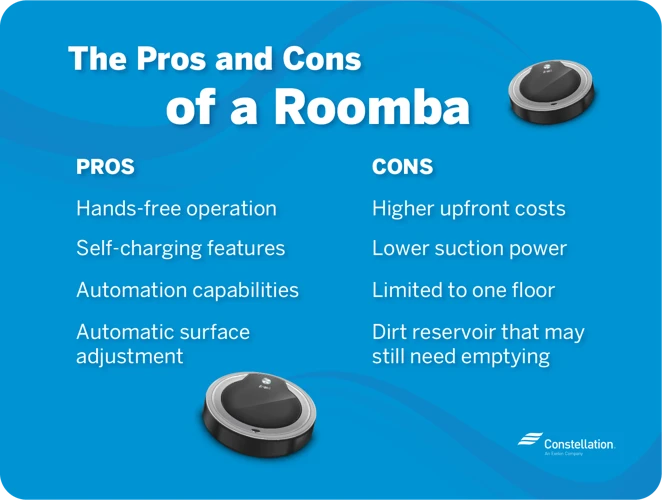
As technology continues to progress, so do our household appliances. Robot vacuums have come a long way from their initial models and now have a variety of smart features that make them more efficient and convenient to use. These features include everything from Wi-Fi and mobile app integration to customized cleaning schedules and voice control. Let’s take a closer look at what makes these robot vacuums so intelligent.
Wi-Fi and Mobile App Integration
Robot vacuums are getting smarter every day, thanks to advancements in technology. One of the most prominent features that make them smart is Wi-Fi and mobile app integration. With this feature, users can easily control their robot vacuums from anywhere at any time using their smartphone or tablet.
Using the mobile app, users can perform various tasks such as starting or stopping the robot, scheduling cleaning sessions, adjusting cleaning modes and parameters, and monitoring the cleaning progress. Some robot vacuums can provide real-time navigation feedback on the app, allowing users to track their robot’s current location on an interactive map.
Table 1: Advantages of Wi-Fi and Mobile App Integration
| Advantages | Description |
|---|---|
| Remote Control | Ability to control and monitor robot vacuum from anywhere using a smartphone or tablet |
| Scheduling | Ability to schedule cleaning sessions for the robot vacuum from anywhere, at any time |
| Navigation Feedback | Real-time navigation feedback on the app, allowing users to track their robot’s current location on an interactive map |
Wi-Fi and mobile app integration also allows for easy customization of the robot’s cleaning preferences. Users can easily adjust the cleaning mode and parameters, including suction power, cleaning cycle duration, and coverage area, to suit their specific cleaning requirements. This means that the robot will be able to clean your home more effectively and efficiently, customizing its cleaning style for different areas and types of flooring.
Having Wi-Fi and mobile app integration also enables voice control integration, which is another useful feature. This means that users can control their robot vacuum by simply using voice commands, making it even more convenient and hands-free.
Wi-Fi and mobile app integration is a key feature of modern robot vacuum cleaners, offering unprecedented control, customization, and convenience to users. Table 1 summarizes the key advantages of this feature.
Automated Spot Cleaning
An impressive feature that sets robot vacuums apart from traditional ones is their ability to execute automated spot cleaning, which allows thorough cleaning of a particular area or spot. This feature is especially advantageous for tackling spills and stains on the carpet or floor.
Robot vacuums typically come with a spot cleaning mode that can be activated either through the control panel or a mobile app. Once activated, the robot vacuum will clean the targeted area in a spiral or zigzag pattern, depending on the model. This ensures that the spot is thoroughly cleaned, leaving no debris behind.
To understand how automated spot cleaning works, let’s take the example of the iRobot Roomba s9+. This robot vacuum uses a combination of its navigation system, sensors, and mapping technology to perform spot cleaning. When activated, the Roomba s9+ uses its Imprint Smart Mapping technology to detect the area to be cleaned. It then creates a detailed map of the surroundings and moves towards the targeted spot.
Once it reaches the spot, the Roomba s9+ uses its 3-Stage Cleaning System to clean the area thoroughly. The robot vacuum first loosens the debris, then lifts it from the surface, and finally sucks it into the dustbin using powerful suction. Some robot vacuums, like the Neato Botvac D7, also come with a powerful brush that can agitate the carpet fibers, dislodging dirt and dust.
Automated spot cleaning is a must-have feature for those who are particular about cleanliness and hygiene. With this feature, users can easily clean up spills and stains without having to get down on their hands and knees. Additionally, it can be extremely helpful in homes with pets or young children, where accidents are a common occurrence.
Here’s a quick summary of the benefits of automated spot cleaning:
| Benefits of Automated Spot Cleaning |
|---|
| Cleans targeted areas thoroughly |
| Helpful for spills and stains |
| Efficient cleaning |
| Saves time and effort |
All in all, automated spot cleaning is an impressive feature that highlights the intelligence and efficiency of robot vacuums. This feature, when combined with other smart features like Wi-Fi and mobile app integration, makes robot vacuums an indispensable tool for modern-day living.
Customized Cleaning Schedules
One of the most convenient features of robot vacuum cleaners is the ability to set customized cleaning schedules. With this option, you can program your robot vacuum to clean at specific times during the day or week, so you can sit back and relax while the vacuum does all the work.
Setting a customized cleaning schedule is simple and can be done using the vacuum’s mobile app or interface. You can choose the days and times when you want the vacuum to clean, as well as the cleaning mode that you prefer. For example, you can set your robot vacuum to do a deep clean on weekends and a quick clean during weekdays, when you don’t have much time.
With the customized cleaning schedule feature, you can also ensure that your floors are always clean and tidy. If you have pets that shed a lot of hair or you have kids that make a mess all the time, you can set the vacuum to clean more frequently to keep up with the mess. On the other hand, if you live in a household with few occupants, you may only need the vacuum to clean once or twice a week.
Using the customized cleaning schedule feature also means that you can save time and energy. Instead of manually vacuuming the floors every day, you can set the robot vacuum to clean automatically, and you won’t have to worry about vacuuming again until it’s necessary.
In addition to saving time and effort, using the customized cleaning schedule feature can also help extend the life of your floors. Cleaning your floors regularly can help prevent the buildup of dirt and dust, which can cause scratches and other damage to your flooring.
The customized cleaning schedule feature is a great addition to any robot vacuum cleaner, as it provides added convenience and flexibility for busy households.
Voice Control Integration
One of the most appreciated features of modern robot vacuum cleaners is voice control integration. With the help of popular voice assistants like Amazon Alexa and Google Assistant, you can now clean your floors without ever having to touch your vacuum cleaner.
The process is quite simple: you just have to use a compatible device like a smartphone or a smart speaker, and set up your robot vacuum cleaner with the voice assistant app. Once you have connected both devices, you can start controlling your vacuum cleaner with voice commands.
Common voice commands include “start the vacuum”, “pause the cleaning”, “send the vacuum back to the dock”, and even “tell the vacuum to clean the living room”. You can also control the intensity of the cleaning process and schedule cleaning sessions with just your voice.
The benefits of voice control integration are obvious: it’s hands-free, convenient, and quick. When you need to clean your floors, you don’t have to stop whatever you’re doing to start the vacuum cleaner. You can control it with your voice, which makes the process seamless and effortless.
However, some users might find the voice control feature to be less reliable than they’d hoped. This is because voice recognition technology is still improving, and it can sometimes misunderstand your commands. Additionally, if you have pets or noisy children in your house, the voice assistant may have trouble hearing your commands over the noise.
Though, voice control integration is a powerful tool that can greatly enhance the user experience of robot vacuum cleaners. It’s just one of the many smart features that make these devices so valuable for modern households.
| Advantages of Voice Control Integration | Limitations of Voice Control Integration |
|---|---|
| Hands-free and convenient | Less reliable than manual control |
| Quick and easy to use | May misunderstand commands |
| Allows for multi-tasking | Noisy environments may cause problems |
Auto Recharge and Resume Cleaning
One of the most convenient features of robot vacuum cleaners is their ability to automatically recharge and resume cleaning. When the battery level of the robot vacuum cleaner begins to run low, it will automatically return to its charging dock to recharge. Once the battery is fully charged, the robot vacuum cleaner will resume cleaning right where it left off.
This feature helps ensure that your robot vacuum cleaner can complete its cleaning task without any interruptions. No longer do you have to worry about plugging in your vacuum cleaner or manually starting the cleaning process. With auto recharge and resume cleaning, you can set your robot vacuum cleaner to clean your floors while you’re away and come back to a completely clean home.
Here is a list of benefits of the auto recharge and resume cleaning feature:
- No Interruptions: with the ability to automatically return to the charging dock and resume cleaning, you won’t have to worry about interruptions in the cleaning process.
- Convenience: this feature adds an unmatched level of convenience to your life, allowing you to have a clean home without any extra effort.
- Time-Saving: auto recharge and resume cleaning saves you time by allowing the robot vacuum cleaner to work on its own, freeing up your time for other important tasks.
- Efficient: the feature is a time and energy-saving feature, enabling your robot vacuum cleaner to clean your house efficiently.
- Peace of Mind: knowing that your robot vacuum cleaner can clean your house without any interruptions provides peace of mind that you will come back to a tidy home every day.
While this feature is undoubtedly convenient, it’s worth noting that this feature requires a robot vacuum cleaner to have a charging dock. If you’re considering purchasing a robot vacuum cleaner, you should ensure that the robot model comes with a charging dock. Additionally, in some cases, the robot vacuum cleaner may struggle to find its charging dock, leading to incomplete cleaning cycles. Despite this, auto recharge and resume cleaning is still a highly desirable feature that saves time, effort, and adds convenience to your life.
Advantages of Robot Vacuums
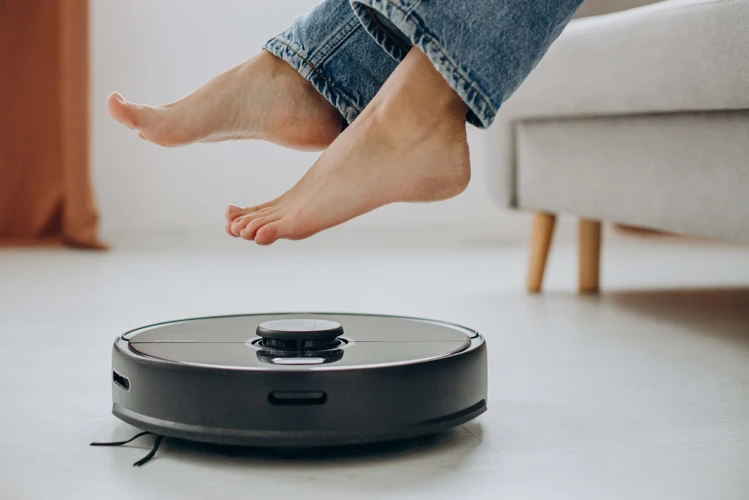
Are you tired of spending hours every week vacuuming your house? Look no further than robot vacuums. These innovative devices offer a myriad of benefits that could make your life easier. Let’s dive into the perks of using a robot vacuum cleaner.
Convenience
One of the key advantages of using robot vacuums is the convenience they bring to our everyday lives. Unlike traditional vacuums, which require manual operation, robot vacuums can be programmed to clean your home even when you’re not there. This means that you can come home to a clean house without having to lift a finger.
Here are some of the ways in which robot vacuums provide convenience:
- Hands-free operation: Robot vacuums are designed to operate autonomously. Once they’re set up, you can simply sit back and relax while they take care of the cleaning for you.
- Easy scheduling: Most robot vacuums come with scheduling features that allow you to set up cleaning times that work for you. This means that you can program the vacuum to clean while you’re at work, running errands, or even while you’re sleeping.
- No need to move furniture: Robot vacuums are designed to navigate around furniture and other obstacles, so you don’t have to spend time moving things around before cleaning.
- Hands-free bin emptying: Some robot vacuums come with automatic bin emptying features, so you don’t have to worry about emptying the dustbin yourself.
The convenience provided by robot vacuums is hard to beat. They make it easier for you to keep your home clean, without requiring any extra effort on your part. With their hands-free operation, scheduling features, and obstacle avoidance capabilities, robot vacuums are a smart choice for anyone who wants to streamline their cleaning routine.
Time-Saving
One of the biggest advantages of robot vacuums is the time-saving aspect they offer. With our increasingly busy lives, any opportunity to offload mundane chores is a welcome relief. Robot vacuums are designed to clean your floors without any need for human intervention, allowing you to focus on more pressing matters.
How much time can you save with a robot vacuum?
The answer depends on the size of your space and the frequency of your cleaning schedule. However, on average, a robot vacuum can save you anywhere from 1-2 hours per week of cleaning time. This may not seem like a lot, but it adds up over time, allowing you to focus on other tasks or simply relax.
Set it and forget it
One of the biggest time-saving features of a robot vacuum is the ability to set it and forget it. Once you program your cleaning preferences, the robot vacuum will navigate your space, clean your floors, and return to its charging station without any need for human intervention. This means you can leave for work in the morning and come home to clean floors without lifting a finger.
Multi-task while your floors are being cleaned
Another benefit of robot vacuums is the ability to multi-task while your floors are being cleaned. Whether it’s working from home, cooking dinner, or simply relaxing on the couch, you can go about your daily routine while the robot vacuum does its job. This is especially beneficial for parents or pet owners who have additional responsibilities to attend to.
To summarize, robot vacuums offer significant time-saving benefits that free us from mundane household chores. By saving you 1-2 hours per week of cleaning time, you can focus on more pressing matters, set it and forget it, and multi-task while your floors are being cleaned.
Efficiency
One of the main advantages of robot vacuums is their efficiency. These machines can clean floors quickly and thoroughly without requiring much human labor. Here are some of the ways robot vacuums are designed to be efficient:
- Autonomous operation: Once you program your robot vacuum to clean your floors, it can do the job without any further input from you. You don’t need to stand around and wait for it to finish, or move it from room to room.
- Multi-surface cleaning: Most robot vacuums are equipped to clean a variety of surfaces, such as hardwood floors, tile, and carpet. This means you can use the same machine to clean all the floors in your home without having to switch between different cleaning tools or techniques.
- Automated charging and resuming: When the robot vacuum’s battery starts to run low, it will automatically return to its charging station to recharge. Once it’s fully charged, it will resume cleaning where it left off, without any intervention from you.
- Sensor technology: Robot vacuums are designed with a range of sensors that allow them to navigate homes safely and quickly. For example, they can detect obstacles in their path, avoid stairs, and adjust their cleaning patterns based on the layout of your home.
- Efficient cleaning patterns: Many robot vacuums use advanced algorithms to map the floor plan of your home and create optimal cleaning routes. This means they can clean your floors in the most efficient way possible, reducing the amount of time and energy required.
The efficiency of robot vacuums can save you significant time and effort in cleaning your floors. These machines are designed to be smart and autonomous, using advanced sensors and algorithms to navigate homes efficiently and clean floors thoroughly.
Low Maintenance
Robot vacuum cleaners require minimal maintenance, making them a highly convenient household appliance. Unlike traditional vacuum cleaners, they don’t require regular filter replacement, belt and brush cleaning, or bag replacement. This significantly reduces the effort required to keep them running smoothly.
One of the main reasons for this is that most robot vacuums come equipped with powerful suction mechanisms that don’t easily get clogged with dust and debris. They also have advanced filtration systems that capture allergens, dust, and other harmful particles, ensuring that the air in your home is clean and healthy.
Robot vacuums are designed to be easy to clean, with most of the parts being dishwasher safe or easy to detach and wash. This means that you won’t have to spend hours cleaning or disassembling them to remove built-up dirt and grime. Some models even come with self-cleaning brushes and vacuum chambers that reduce the maintenance required.
Many robot vacuums use advanced sensors that enable them to detect when their dustbins are full or when their brushes need cleaning. Some models also come with automatic cleaning programs that help keep them functioning optimally, reducing the need for manual intervention or maintenance.
The low maintenance nature of robot vacuums makes them an excellent choice for busy individuals who don’t have the time or inclination to keep up with the regular cleaning required by traditional vacuum cleaners.
Here’s a table summarizing the low maintenance features of robot vacuums:
| Feature | Description |
|---|---|
| Minimal Filter Replacement | Most robot vacuums come equipped with advanced filtration systems that require minimal filter replacement. |
| Easy to Clean | Robot vacuums are designed to be easy to clean, with most of the parts being dishwasher safe or easy to detach and wash. |
| Self-Cleaning Brushes/Vacuum Chambers | Some models come equipped with self-cleaning brushes and vacuum chambers that reduce the maintenance required. |
| Automatic Cleaning Programs | Many robot vacuums come with automatic cleaning programs that help keep them functioning optimally, reducing the need for manual intervention or maintenance. |
As you can see, robot vacuums require very little maintenance, making them a highly attractive and convenient cleaning option for busy households.
Limitations of Robot Vacuums
While robot vacuum cleaners are incredibly convenient and efficient, they do have certain limitations that must be taken into consideration. It is important to weigh the advantages and disadvantages before making a purchase decision. In this section, we will discuss the limitations of robot vacuums and provide insights into their potential downsides.
High Cost
When it comes to purchasing a robot vacuum cleaner, the cost is definitely a factor that needs to be taken into consideration. These machines are certainly not cheap, and the price can be a deterrent for some consumers. Here are some reasons for the high cost of robot vacuums:
- Advanced Technology – Robot vacuums are designed with advanced technology for efficient cleaning. They have numerous sensors, mapping features, and navigation systems which increase their accuracy and precision. This advanced technology comes at a high cost and is a major reason for the high price of robot vacuums.
- Brand Reputation – Some of the most well-known brands in the industry of robot vacuums have built up a reputation for producing high-quality machines. Consumers may be willing to pay a higher price for these brands due to their reputation for producing reliable products.
- Research and Development – Robot vacuum companies invest a lot of time and money into research and development. They need to test their machines under various conditions and develop unique features to make their products stand out from the competition. All of this research and development is expensive and is ultimately incorporated into the final price of the product.
- Low Production Volume – The production volume of robot vacuums is not as high as other home appliances, like conventional vacuum cleaners, which causes the cost of production per unit to be higher. This, in turn, makes the final price of robot vacuums more expensive.
Despite the high cost of robot vacuums, these machines have some impressive features that make them worth the investment. The price of robot vacuums has been steadily decreasing over the years, making them more accessible to the average consumer.
Limited Carpet Cleaning Ability
One limitation of robot vacuums that often goes unnoticed is their limited ability to clean carpets. While robot vacuums can clean low-pile carpets to some extent, their performance on high-pile carpets is not up to the mark. This is mainly due to the robot vacuum’s design and cleaning mechanism.
Below are some reasons why robot vacuums struggle with high-pile carpets:
- Lack of Suction Power: Robot vacuums generally have lower suction power than traditional vacuums, which makes it difficult for them to effectively clean deep within high-pile carpets.
- Tangling: The brushes on robot vacuums can easily get tangled in long carpet fibers, causing the vacuum to stop or become less effective.
- Navigation: High-pile carpets can be difficult for robot vacuums to navigate as the thicker fibers can confuse the vacuum’s sensor and mapping systems.
Despite these limitations, some robot vacuums come with specialized brushes and suction modes designed for cleaning carpets. These vacuums typically have stronger motors and brushes that can agitate the carpet fibers and suck dirt and debris. However, they are often more expensive than regular robot vacuums and may require more maintenance.
It’s important to note that while robot vacuums may not be the best option for deep cleaning carpets, they are still useful for maintaining the cleanliness of low-pile carpets and hard flooring surfaces.
Small Dustbin Capacity
One potential limitation of robot vacuum cleaners is their small dustbin capacity. Although this feature varies from model to model, some robot vacuums have a limited capacity for holding dirt and debris.
As a result, users may need to empty the dustbin more frequently than with a traditional vacuum cleaner, which can be inconvenient for those with busy schedules. Additionally, a small dustbin capacity can reduce the efficiency of the robot vacuum, as it may need to stop cleaning more often to be emptied.
Moreover, the small dustbin capacity may be particularly limiting for people with large homes or rooms with a lot of debris. In such cases, they may need to manually empty the dustbin multiple times during a cleaning cycle, which can be time-consuming and frustrating.
As a solution, some robot vacuums come equipped with larger dustbin capacities, which can be a better fit for larger homes or high-traffic areas. It’s important to carefully evaluate the size of the dustbin before purchasing a robot vacuum to ensure it can handle the cleaning needs of your specific environment.
In addition, some robot vacuum models come with advanced features, such as self-emptying dustbins, which can eliminate the need for manual emptying altogether. However, these models tend to come with a higher price tag.
In conclusion, while the small dustbin capacity of some robot vacuum cleaners can be a limitation, it’s important to weigh this factor against the overall benefits and convenience of a robot vacuum. For those in smaller living spaces or those with less debris, a robot vacuum with a smaller dustbin capacity may be a great fit. However, for those in larger homes or with higher debris levels, a larger dustbin capacity or self-emptying feature may be necessary.
Conclusion
In conclusion, it’s clear that robot vacuums have revolutionized the way we approach cleaning our homes. With advanced navigation systems and sensors, these devices can effectively clean even the most complex layouts with ease, saving users time and effort.
The smart features of robot vacuums make them even more appealing, as the integration of Wi-Fi and mobile app compatibility allows for a completely customizable cleaning experience. Users can set their own schedules, control the device using their voices, and even spot-clean specific areas as needed.
While there are limitations to these devices, such as their high cost and limited carpet cleaning ability, the sheer convenience and efficiency they offer make them a valuable asset for anyone looking to simplify their cleaning routine.
Ultimately, the future looks bright for robot vacuums, as manufacturers continue to improve on their designs and add new features. From pet hair to hardwood floors, there’s almost nothing that these devices can’t handle. So if you’re looking for a way to take some of the stress out of maintaining a clean home, a robot vacuum may be just what you need.
Frequently Asked Questions
How often should I run my robot vacuum cleaner?
It is recommended to run your robot vacuum cleaner at least once a day or every other day, depending on the level of foot traffic in your home.
Do I need to be home while my robot vacuum cleaner is cleaning?
No, you do not need to be home while your robot vacuum cleaner is cleaning. It can be scheduled to clean while you are away, and it will return to its charging dock automatically.
What types of flooring can robot vacuum cleaners clean?
Robot vacuum cleaners can clean a variety of flooring, including hardwood, tile, and low-pile carpet. High-pile carpet, however, may prove to be a challenge.
How does the robot vacuum cleaner navigate around my home?
Robot vacuum cleaners use a variety of navigation systems, including infrared sensors, optical sensors, and cameras, to map out your home and avoid obstacles while cleaning.
Can I control my robot vacuum cleaner with my smartphone?
Yes, many robot vacuum cleaners have mobile app integration that allows you to control and schedule cleanings, as well as view maps and cleaning history.
What happens if my robot vacuum cleaner encounters an obstacle?
Most robot vacuum cleaners have obstacle detection technology that allows them to navigate around furniture and other obstacles. If an obstacle is encountered, the vacuum will either stop or change direction.
How does a robot vacuum cleaner know when to return to its charging dock?
Robot vacuum cleaners use sensors to detect the level of their battery life. When the battery gets low, they will automatically return to their charging dock to recharge.
Can a robot vacuum cleaner clean corners and edges?
Yes, many robot vacuum cleaners have specialized brushes and sensors that allow them to clean corners and edges effectively.
Are robot vacuum cleaners noisy?
Robot vacuum cleaners are generally quieter than traditional upright vacuum cleaners, but noise levels can vary depending on the model.
Do I need to empty the dustbin after each cleaning with my robot vacuum cleaner?
It is recommended to empty the dustbin after each use to ensure optimal performance and avoid clogs. However, some models have larger dustbin capacities and may not require as frequent emptying.


